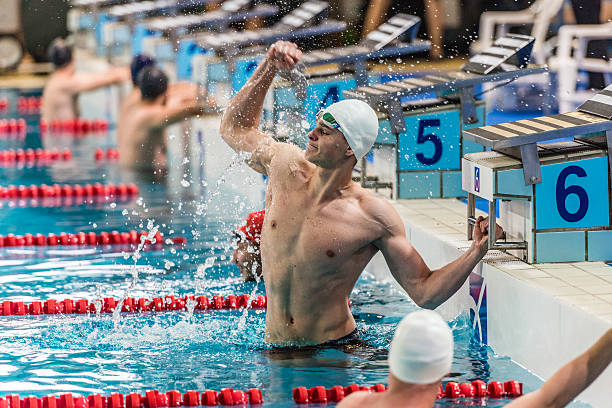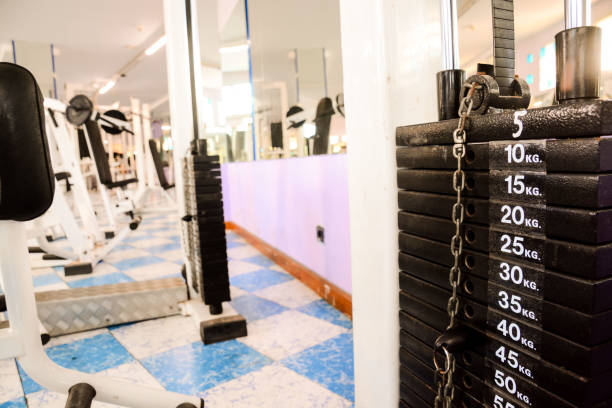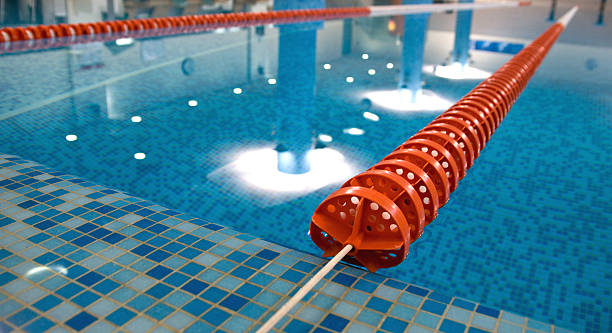
Unlocking the Champion Swimmer’s Mindset (How to win every race)
Competing in a championship swim meet is the culmination of months, if not years, of dedicated training and preparation. It’s not just about physical prowess; it’s about developing the perfect mindset that will help you perform at your best when it matters most. In this guide, we’ll dive deep into the world of championship mindset, exploring the mental strategies and techniques that can help you achieve your swimming goals.
1. Cultivating the Champion’s Mindset
Belief in Yourself
Self-Awareness: Begin by understanding your strengths and weaknesses. Self- awareness helps you recognize your potential, allowing you to focus on what you excel at while working on areas that need improvement.
Positive Self-Talk: Challenge self-doubt and negative thoughts. Replace them with positive affirmations and constructive self-talk. Instead of saying, “I can’t do this,” say, “I’m capable, and I’ll give my best effort.”
Past Achievements: Reflect on your past achievements, no matter how small. These serve as evidence of your abilities and can boost your self-belief. Remind yourself of the hurdles you’ve overcome.
Visualization: Visualize success vividly. Close your eyes and picture yourself performing at your best, whether it’s executing a perfect swim stroke or standing on the podium. This mental rehearsal reinforces your belief in your capabilities.
Goal Setting
Goal setting is not just about setting random objectives; it’s about creating a roadmap for success. Here’s a more comprehensive view:
Specific Goals: Define clear, specific, and measurable goals. Instead of saying, “I want to improve my swimming,” specify, “I want to reduce my lap time by 5 seconds in the 100-meter freestyle.”
Long-Term and Short-Term: Distinguish between long-term and short-term goals. Long-term goals provide direction, while short-term goals offer actionable steps to reach them.
SMART Goals: Follow the SMART criteria—goals should be Specific, Measurable, Achievable, Relevant, and Time-bound. This framework ensures your goals are realistic and motivating.
Progress Tracking: Regularly track your progress toward your goals. Celebrate small victories along the way, as this boosts motivation and focus.
Adaptability: Be willing to adapt your goals as circumstances change. Flexibility in goal setting allows you to stay on course even in the face of unexpected challenges.
Visualization Techniques
Visualization is a powerful mental tool that can significantly enhance your performance. Here’s a more detailed explanation:
Detailed Imagery: In your visualization, go beyond the basics. Visualize the sensory details—the smell of the pool, the sound of the crowd, the sensation of water against your skin. The more vivid and detailed your mental imagery, the more effective it becomes.
Positive Emotions: While visualizing, immerse yourself in positive emotions. Feel the elation of victory, the pride of achievement, and the thrill of a perfect swim. Emotions reinforce your mental conditioning.
Repetition: Regularly practice visualization, ideally incorporating it into your daily routine. The more you visualize success, the more it becomes ingrained in your subconscious, making it feel attainable.
Variety of Scenarios: Visualize various scenarios, including overcoming challenges or setbacks. This mental preparedness equips you to handle unexpected situations during competitions.
Incorporating these techniques into your training and mindset not only forms the foundation of a champion’s mentality but also empowers you to reach your full potential in swimming and beyond.
2. Training the Mind and Body
Mental Training Exercises
Controlled breathing exercises can help regulate your physiological responses to stress. Techniques like deep diaphragmatic breathing can calm your nerves and improve focus.
These exercises are especially valuable in high-pressure situations. Or use visualization.
Physical Preparation
Physical fitness and mental preparation are interconnected and essential for peak performance. Here’s a more detailed perspective:
Stress Reduction: Regular physical exercise, such as cardiovascular workouts or strength training, can reduce overall stress levels. Lower stress contributes to improved mental clarity and emotional resilience, allowing you to stay composed during competitions.
Endorphin Release: Exercise triggers the release of endorphins, the body’s natural mood enhancers. These chemicals promote a positive outlook and reduce feelings of anxiety or depression, creating a favorable mental state for competition.
Discipline and Routine: Physical training instills discipline and routine, which are transferable to mental preparation. Athletes who commit to consistent physical training often find it easier to adhere to mental training regimens.
Body-Mind Connection: Physical fitness enhances the connection between your body and mind. When you’re physically fit, you’re more in tune with your body’s signals and can better regulate physiological responses to stress.
5. Managing Pre-Race Nerves
Positive Self-talk
Mastering your breath is a powerful tool to manage pre-race anxiety and enhance your confidence:
Diaphragmatic Breathing: Also known as deep breathing, this technique involves inhaling deeply through your nose, allowing your diaphragm to expand, and then exhaling slowly through your mouth. It triggers the relaxation response and calms your nervous system, reducing anxiety.
Box Breathing: This technique involves inhaling for a count of four, holding your breath for a count of four, exhaling for a count of four, and then holding your breath for a count of four again. Box breathing helps regulate your breath and focus your mind, promoting a sense of control.
Long Exhale: For a longer exhale, inhale for a count of four and exhale for a count of six or eight. Lengthening the exhale further relaxes your body and mind, making it an effective technique for managing pre-race jitters.
Alternate Nostril Breathing: This yogic technique involves closing one nostril while inhaling through the other, then switching nostrils while exhaling. It balances your energy and clears your mind, helping you stay centered and composed.
By practicing these breathing techniques regularly, you can not only calm pre-race anxiety but also improve your overall ability to manage stress, stay focused, and perform at your best.
Positive Self-talk
Positive self-talk is a powerful mental tool that can significantly impact your mindset:
Replace Negative Thoughts: Positive self-talk involves replacing negative or self-doubting thoughts with affirmations and constructive statements. For example, instead of thinking, “I’m nervous; I might fail,” you can say, “I’m prepared, and I can handle this challenge.”
Boost Confidence: Positive self-talk bolsters your self-confidence. When you continually reinforce positive beliefs about your abilities, you build a stronger sense of self-assurance and resilience.
Stress Reduction: By maintaining a positive internal dialogue, you reduce stress and anxiety. This leads to a calmer, more focused mindset, which is crucial for race performance.
Visualization: Combine positive self-talk with visualization techniques. Imagine yourself successfully completing the race, and as you do, reinforce your positive beliefs and affirmations. This creates a powerful synergy between mental preparation and confidence building.
6. The Power of Routine
Establishing Pre-race Rituals
Creating pre-race rituals involves developing a set of actions, behaviors, and mental strategies that you perform before a competition. These rituals serve several important purposes:
1. Mental Preparation: Pre-race rituals help you mentally prepare for the challenge ahead. By repeating specific actions or thoughts, you signal to your brain that it’s time to shift into competition mode. This can reduce anxiety and increase focus.
2. Confidence Building: Rituals often include confidence-boosting activities. For example, some athletes may engage in positive self-talk, visualization, or deep breathing exercises as part of their pre-race routine. These practices reinforce a strong self-belief.
3. Routine and Control: Rituals provide a sense of routine and control in a high-pressure environment. They create a familiar sequence of events that athletes can rely on, which can be comforting when facing uncertainty.
4. Consistency: Establishing pre-race rituals can help ensure that your mental state is consistently optimal for performance. Repetition of the same rituals conditions your mind to associate these actions with competition, making it easier to get into the right mental state.
Staying Consistent
Consistency in your pre-race routine is crucial for maintaining a championship mindset for several reasons:
1. Psychological Conditioning: Consistency reinforces the mental conditioning achieved through your pre-race rituals. When you perform the same actions before each race, you’re consistently signaling to your mind that it’s time to excel.
2. Emotional Stability: A consistent routine helps stabilize your emotions. It prevents wild fluctuations in anxiety, excitement, or doubt, allowing you to maintain a more balanced and composed mindset.
3. Habit Formation: Consistency turns your pre-race rituals into habits. Habits are automatic and require less conscious effort. This frees up mental energy that you can redirect towards your performance.
4. Predictable Performance: A consistent routine leads to more predictable performance. Athletes who follow a familiar sequence of rituals tend to achieve more reliable results, reducing the impact of performance anxiety.
7. Overcoming Setbacks
Embracing Failure
- Shift in Perspective: Instead of seeing failure as a dead-end, see it as a detour on the road to success. Understand that every setback provides valuable lessons and experiences.
- Resilience: Embracing failure requires resilience. It’s about bouncing back from setbacks with renewed determination. Resilient individuals view adversity as a chance to become stronger.
- Continuous Learning: When you embrace failure, you commit to continuous learning. Analyze what went wrong, identify areas for improvement, and adjust your approach accordingly.
- Growth Mindset: Developing a growth mindset is key to embracing failure. A growth mindset means believing that abilities and intelligence can be developed through dedication and hard work. This mindset fosters a willingness to learn from mistakes.
- Adaptation: Setbacks often demand adaptation. Embracing failure means being flexible and open to change. You may need to adjust your goals, strategies, or expectations to move forward.
- Resilient Attitude: A resilient attitude involves maintaining optimism even in the face of adversity. It’s the belief that setbacks are temporary and that you have the capacity to overcome them.
8. Maintaining Confidence During the Meet
Staying Focused
Mindful Breathing: Pay attention to your breath. Deep, rhythmic breathing can help calm your nerves and keep you centered. Focus on your breath to stay present in the moment.
Set Clear Goals: Have a race plan with specific goals. Knowing what you want to achieve and breaking it down into smaller milestones can help you stay on track.
Stay Present: Concentrate on the task at hand. Avoid distractions and resist the urge to think too far ahead. Focus on each step or stroke, and the process will take care of the outcome.
Use Mantras: Develop personal mantras or motivational phrases that resonate with you. Repeating these mantras during the race can help maintain your mental focus.
Practice Concentration: In training, practice concentration exercises. For example, try to maintain a steady pace and rhythm, which requires mental discipline.
Control Your Environment: Control what you can, such as your race gear, nutrition, and hydration. Feeling prepared can reduce anxiety and help maintain focus.
Avoiding Negative Comparisons
Comparing yourself to others, especially in a negative light, can be detrimental to your mindset and race performance. Here’s why you should avoid negative comparisons:
- Undermines Confidence: Constantly comparing yourself to others can erode your self-confidence. You may start doubting your abilities, leading to a self-fulfilling prophecy of poor performance.
- Shifts Focus Away: Instead of concentrating on your own race strategy, negative comparisons divert your attention to external factors. This can disrupt your focus and hinder your performance.
- Creates Unnecessary Pressure: Comparisons often lead to unrealistic expectations. Feeling pressured to outperform others can increase anxiety and stress, negatively impacting your race.
- Ignores Individual Progress: Every athlete is unique, and progress should be measured against your own journey. Focusing on personal growth rather than external comparisons fosters a healthier mindset.
- Diminishes Enjoyment: Racing should be an enjoyable experience. Constantly comparing yourself to others can rob you of the joy of the sport and lead to burnout.
10. The Role of Support Systems
Coaches and Teammates
How your coaches and teammates can contribute to your mindset.
Family and Friends
The importance of a support system outside the pool.
12. Dealing with Pressure
Embracing Pressure as a Motivator
Pressure can be a powerful motivator if harnessed correctly:
Goal Reframing: Instead of viewing pressure as a burden, reframe it as an opportunity. Recognize that pressure is a sign that what you’re doing matters, and it can drive you to perform at your best.
Setting Clear Goals: Establish clear and achievable goals. Knowing what you’re aiming for can help you stay motivated and focused under pressure. Break larger goals into smaller, manageable steps to maintain a sense of control.
Visualization: Use pressure as a catalyst for visualization. Visualize yourself handling high-pressure situations successfully. This mental rehearsal not only boosts your confidence but also prepares you for the real thing.
Positive Self-Talk: Engage in positive self-talk to reinforce your belief in your abilities. Remind yourself of past successes and affirm that you’re capable of handling pressure. Use statements like, “I thrive under pressure,” to boost motivation.
Avoiding Overthinking
Overthinking can sabotage performance, especially under pressure. Here’s how to maintain a clear mind:
Mindfulness Techniques: Practice mindfulness and stay present. Focus on the task at hand rather than worrying about the future or past. Techniques like deep breathing and meditation can help you stay centered.
Task-Oriented Approach: Concentrate on the immediate task rather than the overall outcome. Breaking the challenge into smaller, manageable steps can prevent overwhelming thoughts.
Preparation: Thorough preparation builds confidence and reduces overthinking. Knowing you’ve put in the work allows you to trust your abilities and decisions during high-pressure moments.
Stay Positive: Cultivate a positive mindset. When faced with pressure, remind yourself of your strengths and previous successes. Avoid negative self-talk or catastrophic thinking.
Time Management: Create a structured plan or timeline for your activities. This helps you allocate your time and resources effectively, reducing the urge to overthink.
By embracing pressure as a motivator and implementing strategies to avoid overthinking, you can use pressure to your advantage and maintain a clear, focused mindset even in the most challenging situations. These mental techniques are valuable not only in sports but also in various aspects of life.
13. The Mindset for Long-term Success
Set New Goals: Instead of basking in the glory of a single championship, set new and ambitious goals for your long-term journey. These goals could include achieving personal best times, mastering new swimming techniques, or conquering longer distances. Having clear objectives keeps you motivated and committed.
Consistent Training: Maintain a disciplined training regimen. Just as you prepared diligently for the championship meet, continue to put in the effort during your regular training sessions. Consistency is key to long-term improvement.
Mental Resilience: Understand that setbacks and challenges are part of any athletic journey. Develop mental resilience by learning from failures and using them as stepping stones to success. A championship mindset means not giving up when faced with obstacles.
Celebrate Small Wins: Don’t wait for the next championship to celebrate your achievements. Acknowledge and celebrate small victories along the way. It could be a personal best time, improved technique, or consistent attendance at training. Recognizing progress reinforces your commitment.
Seek Coaching and Feedback: Continue to work with a coach or mentor who can provide guidance and feedback. They can help you refine your skills and maintain a growth-oriented mindset.
Support Network: Surround yourself with a supportive network of fellow swimmers, friends, and family. Their encouragement can keep you motivated during the ups and downs of your swimming journey.
Periodic Evaluation: Periodically assess your progress and adjust your goals accordingly. This self-reflection ensures that you’re on the right track and helps you make any necessary course corrections.
Enjoy the Journey: Remember to enjoy the process. While championships are rewarding, the joy of swimming comes from the daily grind, the friendships you build, and the sense of accomplishment in each training session.
15. Conclusion
In conclusion, creating a perfect mindset for your championship meet in swimming is a multifaceted journey. It requires a combination of self-belief, mental training, and strategic preparation. With dedication and the right mindset, you can maximize your performance and achieve your swimming goals.
FAQs (Frequently Asked Questions)
1. How long does it take to develop a championship mindset for swimming?
The time it takes to develop a championship mindset varies from person to person. It depends on your starting point, dedication, and the specific mental challenges you need to overcome. With consistent practice and the right techniques, progress can be made over a few months, but it’s an ongoing process.
2. Can a championship mindset be applied to other areas of life?
Yes, many of the mental strategies used in swimming can be applied to other aspects of life, such as academics, work, or personal goals. The principles of self-belief, goal setting, and resilience are universally valuable.
3. How do I stay motivated during long training sessions?
Maintaining motivation during extended training sessions can be challenging. One effective approach is to break your training into smaller, manageable goals and reward yourself for achieving them. Also, reminding yourself of your long-term swimming aspirations can provide motivation.
4. What should I do if I feel overwhelmed by pre-race nerves?
If you’re overwhelmed by pre-race nerves, try deep breathing exercises to calm your mind and body. Positive self-talk can also help counteract anxiety. Additionally, stick to your pre-race routine to create a sense of familiarity and comfort.
5. How can I bounce back from a disappointing race?
Bouncing back from a disappointing race involves analyzing what went wrong, learning from the experience, and setting new goals. Embrace failure as an opportunity for growth and use it to fuel your determination


